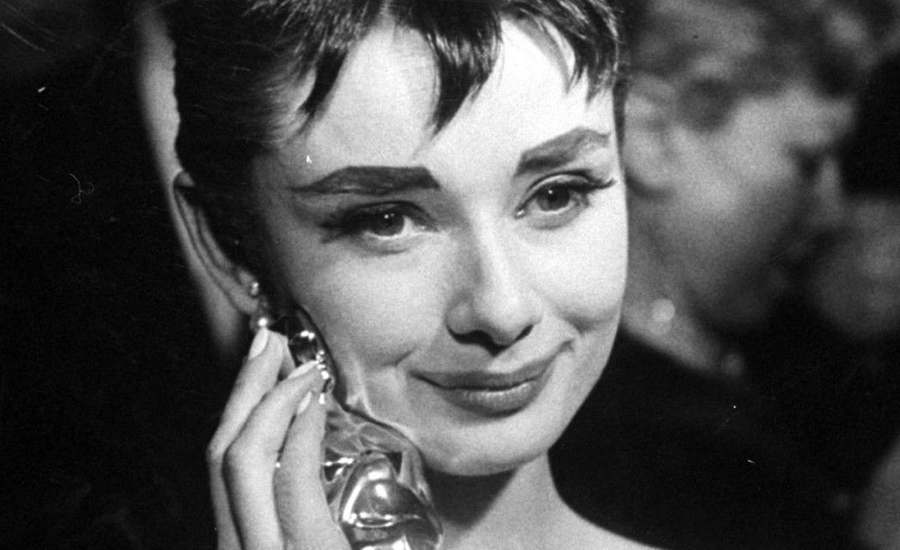Anne Bancroft: the Complexities of a Gifted Actress
ANNE BANCROFT, the actress, was born in 1931 around Moshulu Parkway in the Bronx, as Anna Maria Louisa Italiano. She grew up to be a brilliant actress and a complex person. She loved to act — but only in a play or movie that meant something, a story ABOUT something. Working in a very public profession, she disliked being dissected by others, or having her secrets probed. There was a part of her that wanted to be taken care of — yet she was far too quick and bright to let just anyone do it.
She grew up in an expressive Italian-American family with emotions very near the surface. People laughed, cried, raged at each other, laughed some more. Also part of being Italian was how central and trusted the family was, and how mistrusted the larger society. The message was: ‘Never depend on outsiders. We take care of our own.’
She was a natural extrovert. There were many family picnics and an uncle would bring his guitar. Of the three Italiano children, Marie was the one who’d sing and dance in public. She never got nervous when strangers came to watch or listen; she loved it. She’d sing on a street corner, knowing this gift for performance pleased her mother Mildred.
Marie went to PS 35, and in 1948 graduated from Christopher Columbus High in the Bronx. She was a natural at student theater productions. Since her emotions were always near the surface, she could easily simulate them on stage.
In those days, she saw newsreel footage of glamorous actresses arriving for the premiere of their latest film, wearing lavish fur coats and smiling for the cameras. ‘That’s what I’d like to do,’ she thought. In her teens, it became clear to her that her mother, who worked as a telephone operator at Macy’s, had dreamed of being an actress herself.
One day, at a family gathering, Marie’s father said that Marie might become an actress. An aunt whom Marie had never much liked laughed at this and called it “a pipe dream.” This made Marie determined to be an actress.
Mildred scraped together money for Marie to attend The American Academy of Dramatic Arts, and there she learned some useful technical things such as the value in finding a character’s “motivation” and how to project her voice without shouting. But she was only 16 when she began taking those classes. Later, she decided you can’t be a serious actor before you’re 25; you simply lack the maturity to focus properly, or the wisdom to endow your characters with depth. You haven’t been deeply in love; you haven’t been cheated by the world; you haven’t made a single adult success.
In her 20’s, Bancroft tried to break into show business with small parts in television, in the days when TV was still being filmed live. Those were years of frustration. Changing her name from Marie Italiano to “Anne Marno” didn’t help. There wasn’t enough work, and the bit parts that came along weren’t very challenging. The characters were “types” and no improvising was allowed; the lines had to be performed exactly as written.
In 1952, Bancroft appeared in her first film “Don’t Bother to Knock,” starring Marilyn Monroe. A series of films followed, in which she did a fine job — but, again, with mediocre material.
So it was on Broadway that she made her reputation, now as “Anne Bancroft.” Here, the scripts were stronger and more subtle, she could stop worrying about the quality of the writing, or whether she was using enough of her mind, and just disappear into the role. She was hungry and she poured herself into these plays, and enjoyed being obsessed.
In 1958, she got strong reviews for playing a kooky young dancer from the Bronx in “Two For the Seesaw.” It was just a two-person play, and her co-star, Henry Fonda, was so gifted that Anne had to be careful not to be blown off the stage. The play’s director, Arthur Penn, knew Bancroft from several TV plays they’d done together. He told her she had the talent to match Henry Fonda, and she had great energy, but to reach her potential she would need to bring more different facets of herself into her acting. She did and surpassed all of Penn’s expectations.
In 1962, working again with Arthur Penn, she had another triumph playing Annie Sullivan in “The Miracle Worker,” a play about the arc of the relationship between an idealistic young teacher and the even younger, headstrong deaf-mute Helen Keller.
There’s a harrowing seven-minute scene in the play where Annie is exhausted and trying to eat a meal, and Helen is determined to ruin it, pulling Annie’s chair out from under her, trying to steal her food. It becomes a quietly brutal power struggle between teacher and student, with both of them humiliated in the end. The scene depicts chaos but requires a polished choreography, great stamina, intensity and an ability to show a woman near despair.
Bancroft was such a powerful Annie Sullivan that they gave her the role when Hollywood made the play into a movie. She felt honored but regretted later that she hadn’t fought for a bigger salary.
In 1963, she starred in the first Broadway production of the Bertold Brecht play “Mother Courage.” The production was needlessly stressful, and she wasn’t entirely sorry when it closed, but she was deeply grateful to have been able to get to know intimately this masterpiece of antiwar literature.
She never attended the premieres of any of her movies, let alone in a fur coat, smiling for the cameras.
In 1964, she married the comic actor and director Mel Brooks. It was that rare thing in Hollywood, a happy marriage.
But then Anne Bancroft felt that happiness was overrated — bravery and knowledge and achievement meant much more to her than happiness.
Mel was proud of Anne’s talent, and encouraged her to perform, but he stood up to her, too. When she came home one day complaining about how hard acting was, he suddenly had a blank piece of paper in front of her and a pencil and was saying, “THAT’S how hard writing is!” Anne remarked that Mel was someone you could love and hate in the same moment.
In 1967, she made what she expected would be a very obscure movie because it was made from an obscure novel, directed by a novice director, Mike Nichols, and her co-star was an unknown named Dustin Hoffman. The film was “The Graduate.” It became famous and deservedly so.
“The Graduate” is about Benjamin Braddock, a new college graduate returning from a prestigious East Coast college to his parents’ house in Pasadena. Benjamin is confused about what he wants from life, and his life turns upside down when he’s seduced by one of his parents’ closest friends, Mrs. Robinson, played by Bancroft. It could have been a disastrously bad movie, a failed sex farce, if the script, the acting and directing hadn’t been so good.
Bancroft decided that Mrs. Robinson was an unconventional woman saddled with a conventional husband, a woman with talent that had never been expressed, and dreams which would never be fulfilled. A stifled woman, starting to go to pieces, and angry with herself for valuing money and security more than finding out who she really was. Also a neurotic, bored in her marriage, and very strong-willed. Bancroft was 35 years old, playing a woman a decade older, and somehow she brought all of this across.
“May I ask you a question?” Mrs. Robinson asks Benjamin Braddock. “What do you think of me?”
“What do you mean?” Benjamin chokes out.
“You’ve known me nearly all your life. You must have formed some opinion of me.” She is utterly in control, a woman pulling the wings off a fly, and you feel both the self-hatred in her toying with this young man, and also her steely determination to prove herself desirable.
“The Graduate” became the top-grossing film of 1967 and it made Bancroft famous. She had no time to enjoy the film’s success because as soon as shooting was over, she went into rehearsals for a Broadway revival of Lillian Hellman’s “The Little Foxes.”
Bancroft was proud of her work in “The Graduate” but she had very mixed feelings about the movie’s fame, because it tended to overshadow all of her other roles, and to make both men and women think of her, if only subconsciously, as an unstable, unhappily married woman who seduced younger men.
Whenever the film had recently shown again on television, at social occasions she could count on a cooler reception from women her own age. Meanwhile, young men would be warm and attentive.
‘It was a performance!’ she wanted to tell all those people. The “naked” shots of me were done with a body double. ‘I never knew Dustin Hoffman at all!’ She tried to take people’s attitude toward her as a compliment.
In 1972, at the age of 41, she gave birth to her son, Max Brooks, very late to be a first-time mother. She thought of naming him Nick because she’d gotten pregnant in the nick of time. The last several months she stayed in bed, by doctor’s orders, terrified of losing the baby. But he was born healthy. Later, she wished she’d tried again, and had another.
She felt “devoured” by the job of being a mother and, after a few years, felt she was in danger of losing herself. But she found small, supporting roles to play in a dozen or more pictures. In 1977, she played an aging ballerina in “The Turning Point.”
But she never starred in a great movie after “The Graduate.” After 1990, when Max had left home, she began acting again. A TV series in England, a few stage roles, a few small parts in films.
She gave so much on stage and when the camera rolled but remained an intensely private woman off-stage, who rarely gave interviews.
Arthur Penn was enormously impressed by her performance as Mrs. Robinson, the way she showed us this damaged, dangerous, seductive woman, showed us the wheels turning in her mind. He asked Bancroft, ‘How did you sustain that angry energy over such a long film shoot?’
She smiled and said, ‘Oh, darling, we’ll talk about it some day.’ But they never did.
One thing she told people was that the same drive which had fueled her career had kept her from finding peace. In her 60’s, she was surprised to find how much of that driven woman was gone. She enjoyed working in her vegetable garden, watering and weeding, on the path to peace.
In June of 2005, when she died at 73, of uterine cancer, even some of Anne Bancroft’s good friends hadn’t known she was sick.
Her favorite late career film role was in “Up at the Villa” (2000) a beautifully shot film about a clan of expatriates in Florence in 1938 and 1939, enjoying their parties, in total denial about the rise of fascism and what it means to the world. She loved playing a princess in that film, which was filmed in Florence over a three-month period, and had an excellent script. The whole cast stayed in the same old-fashioned hotel and gathered as a group in the evenings.
The finished film got mixed reviews — but Anne Bancroft was proud of it, because it was very definitely ABOUT something. It was about the ways that we seal ourselves off from larger truths that are just too much to bear.





